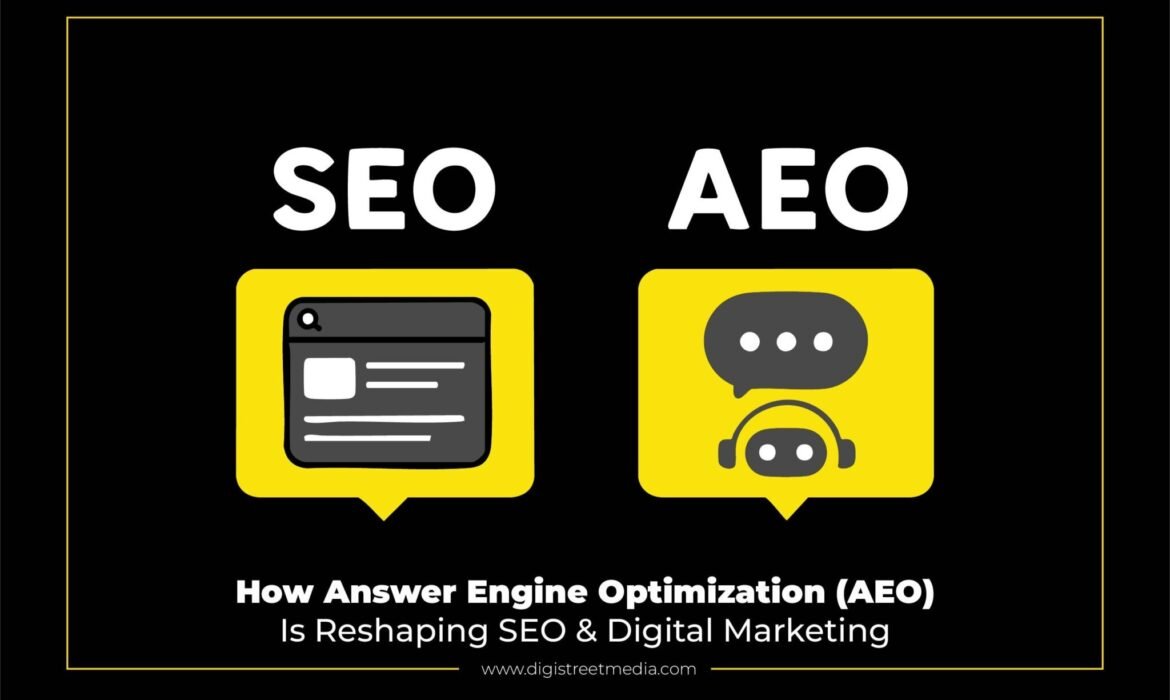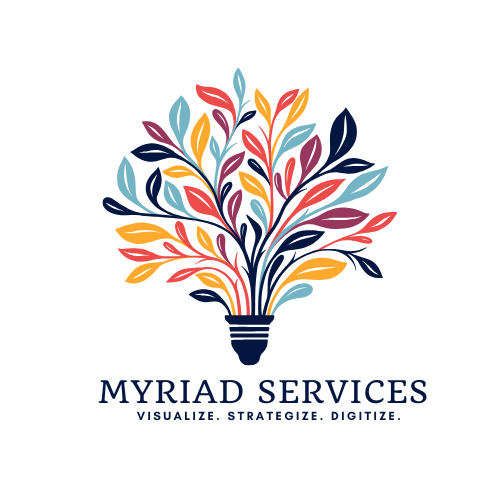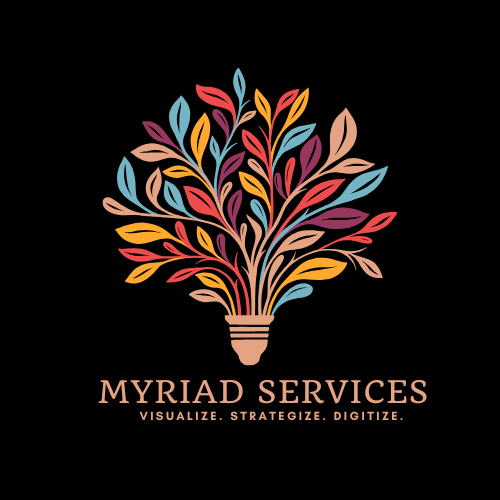
Summary: The article explores how Answer Engine Optimization (AEO) is reshaping SEO and digital marketing by focusing on delivering direct, structured answers to user queries, especially through AI-powered platforms like voice assistants and chatbots. It highlights the key differences between traditional SEO and AEO, covering essential strategies such as keyword research, content formatting, structured data, and authority building. The article emphasizes how businesses can benefit from adopting AEO to stay visible in zero-click environments. It concludes by recommending Digistreet Media as a trusted AEO Services Company to help brands adapt and thrive in this evolving digital landscape.
In 2025, the dynamics of search are evolving faster than ever. With the rise of conversational AI tools like ChatGPT, Gemini, and Siri, traditional search engine behavior is giving way to answer engines— platforms designed to deliver direct answers rather than lists of links. This transformation has given birth to Answer Engine Optimization (AEO), a powerful evolution in digital marketing strategies.
Digistreet Media—a leading AEO Services Company—understands how this transformation impacts brands across industries and is pioneering approaches that bridge human intent and machine intelligence.
What Is AEO and Why It Matters
Understanding AEO
At its core, Answer Engine Optimization (AEO) is about structuring content to directly answer user questions in formats that AI and voice assistants prefer. Unlike traditional SEO, which emphasizes keyword rankings and backlinks, AEO focuses on delivering precise, concise answers via featured snippets, voice results, and AI-generated summaries
Why AEO Is Urgent in 2025
- AI-powered engines serve nearly zero-click results, meaning users get answers without visiting websites—making snippet placement more valuable than ever.
- With conversational queries and voice assistants dominating, users phrase searches as natural questions (“How do I file GST in India?”). Content optimized for these patterns is more likely to surface.
- AI chatbots increasingly cite brands as sources. AEO ensures businesses gain visibility and authority in these AI-powered responses.
Key Differences: AEO vs. SEO
| Feature | Traditional SEO | AEO (Answer Engine Optimization) |
| Objective | Rank higher in SERP | Provide direct, accurate answers |
| Content Style | Keyword-driven, long-form | Q&A-style, conversational, concise |
| Audience Interaction | Click-through visits | Zero-click visibility via voice and snippet |
| Metrics | Clicks, rankings, bounce rate | Featured snippet inclusion, voice search impressions, citations |
| Structure | Backlink-driven authority | Schema markup, clear headings, bullet lists |
- Strategy Shift: From Link Building to Authority Building
While backlinks remain relevant, AEO redefines authority through citations, structured information, and conversational clarity. Content that shows experience, expertise, authority, and trust is more likely to be chosen by AI tools.
Digistreet Media helps brands:
- Highlight author credentials and certifications.
- Use precise data and trusted references for AI sources.
- Maintain trust signals to comply with AI quality filters.
- Crafting Intent-Driven Content: Keyword Research Reimagined
Keyword Research for Modern Queries
Rather than using common keywords, AEO targets real questions that people ask, such as “How to reduce bounce rate in SEO?” or “Best expense tracker apps for small businesses?” Tools like Keyword Planner, AlsoAsked, and ChatGPT help uncover real queries.
Mapping to Customer Journey
- Awareness Questions: “What is AEO?”
- Evaluation Queries: “SEO vs. AEO—what’s the difference?”
- Decision Intent: “Best AEO Services Company for financial brands?”
Structuring Content Strategy
- Use a hub-and-spoke model: main guide on AEO with sub-articles (“How to optimize snippets”, “Voice search AEO tips”).
- Add FAQs, bullet lists, and step-by-step instructions for clarity.
- On‑Page Structure for AEO
To help AI parse answers:
- Format headings as actual questions (H2/H3).
- Begin sections with immediate, concise answers.
- Use bullet points and tables for clarity and scannability.
- Add schema markup and FAQ sections for machine readability.
- Technical Foundations: Ensuring Machine-Friendliness
- Structured Data (Schema): Mark FAQs, product info, how-tos to aid AI retrieval.
- Mobile Optimization & Speed: AI bots prioritize responsive, fast-loading sites—optimize Core Web Vitals or risk exclusion.
- Avoid Duplicate Content: Use canonical tags and ensure each answer is unique.
- Optimize Crawling Efficiency: Prioritize high-value content; minimize indexing of boilerplate or login pages.
- Link Strategy That Aligns With AEO Goals
While link quality still matters:
- Focus on contextual, authoritative citations instead of volume-driven link farming.
- Guest post on niche expert sites, get referenced in AI-curated summaries, convert unlinked mentions into backlinks.
- Avoid spammy directories and reciprocal schemes that AI bots distrust.
- Role of AI in Visibility & Trust
- Brands found via AI responses gain implied branding even without clicks.
- Voice search dominance means optimizing tone and phrasing for spoken queries.
- Measuring trust now includes how frequently AI chatbots reference your site.
- Monitoring AEO Performance in 2025
Appropriate metrics shift:
- Snippet Impressions: frequency in featured snippet/answer box.
- Voice Search Visibility: track via analytics tools or AI ranking platforms.
- Use tools like Google Search Console, Semrush, AlsoAsked, and ChatGPT to test content visibility.
- Tailor content to how AI systems work and what users want.
Integrating AEO & SEO into a Unified Strategy
Despite the shift, AEO complements—not replaces—traditional SEO:
- SEO drives traffic through search ranking.
- Make sure content shows up well in search engines and voice assistants.
Together, they form a holistic digital marketing approach tailored for 2025 and beyond.
Why Adapt With Digistreet Media
Digistreet Media offers a structured approach to merge SEO foundations with AEO innovations:
- Rewrite blogs and guides: to make them easier to answer questions from.
- Use schema markup to help AI understand and use the content quickly.
- Authority-building through credible sources and citations.
- Dashboard monitoring for AI-specific visibility metrics.
- Iterative content refinement based on AI trends and performance data.
Final Thoughts
Answer Engine Optimization is more than just an update to SEO; it represents a major change in how things work. With AI and voice search dominating discovery, brands must optimize not just for ranking but for being the answer. As traditional clicks decrease, it’s more important than ever to be seen as a reliable and trusted source.
By working with an AEO Services Company like Digistreet Media, businesses can future-proof their digital strategy—capturing visibility in AI-driven environments, improving user engagement, and establishing brand authority without depending solely on links and keywords.
Don’t just aim to rank; position your content to be the answer in an AI-first world.
FAQs
What is the difference between SEO and AEO?
SEO (Search Engine Optimization) is focused on improving a website’s visibility and ranking on search engine result pages (SERPs) using keywords, backlinks, and technical optimization. In contrast, AEO (Answer Engine Optimization) is designed to deliver direct, concise answers to user queries, especially on platforms like voice assistants, AI chatbots, and zero-click result formats. While SEO drives users to websites, AEO ensures your content becomes the authoritative answer, even if the user never clicks.
Why is AEO becoming more important in 2025?
In 2025, users are increasingly relying on AI-driven tools like ChatGPT, Google’s Gemini, and voice assistants like Siri and Alexa for fast, spoken, or typed answers. These tools pull content directly from websites without users clicking through. AEO ensures your content is structured in a way that these tools can easily understand and reference, helping your brand gain visibility in zero-click environments.
How can I optimize my website content for AEO?
To optimize for AEO, format your content in a Q&A style, use schema markup (especially FAQ and How-To schemas), ensure headings are phrased as questions, and provide concise, direct answers at the top of each section. Structured data, fast load speeds, and authoritative sources also help AI systems prioritize your content for answer boxes and voice results.
Does AEO replace traditional SEO strategies?
No, AEO does not replace SEO—it complements it. While traditional SEO is still essential for traffic, keyword visibility, and long-term rankings, AEO helps your content get featured as an instant answer or voice search result. Integrating both strategies ensures your brand is discoverable across all search environments, from SERPs to smart assistants.
Why should I choose Digistreet Media for AEO services?
Digistreet Media is a trusted AEO Services Company that blends traditional SEO knowledge with advanced AEO techniques. They specialize in rewriting existing content to be answer-friendly, implementing structured data, monitoring AI-driven performance metrics, and building trust signals that align with AI ranking algorithms. Their approach ensures your content stands out not just in Google search, but across all intelligent platforms shaping the future of digital discovery.

